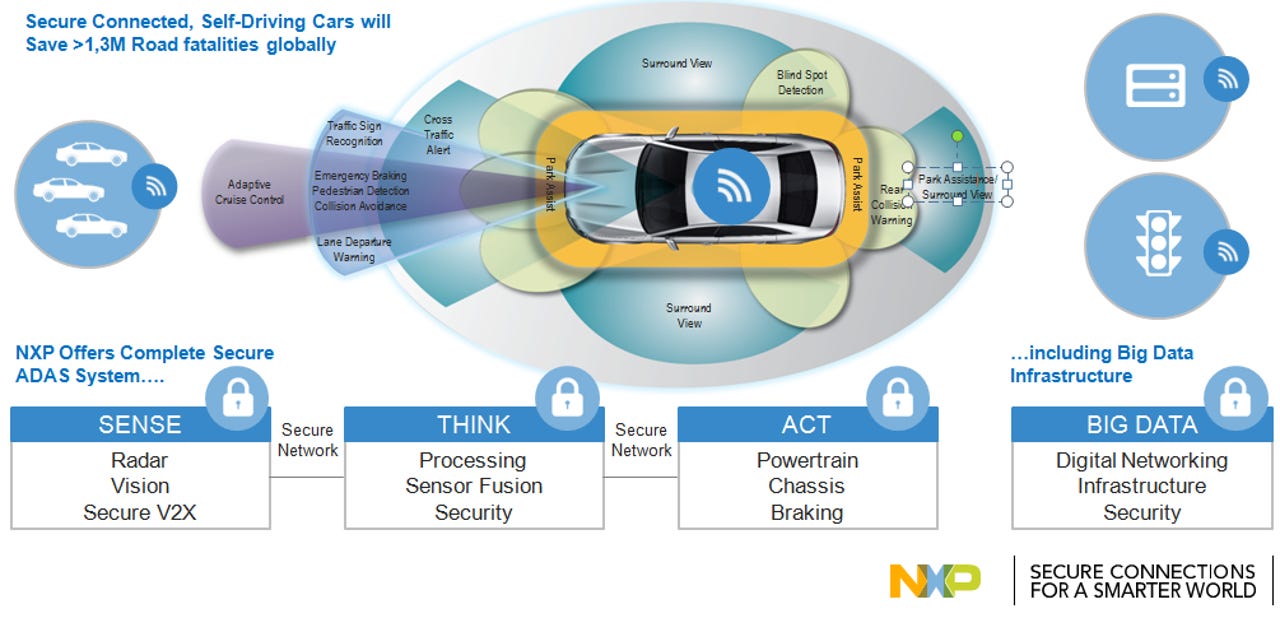NXP launches smaller radar processor, aims to bolster autonomous vehicles

NXP Semiconductor said Monday that it has launched a single-chip radar system for cars that is about the size of a fingernail or postage stamp. The advance is likely to put radar in more vehicles and pave the way for more implementations of driver assistance systems and autonomous autos.
Google is testing NXP's system on a chip radar system in its self-driving car efforts. NXP said that working prototypes are being tested by other automakers.
For NXP, which completed its merger with Internet of things player Freescale last month, the 77GHz radar transceiver is an effort to lead the component push for the auto market. Radar is the core technology for Advanced Driver Assistance Systems, which provide emergency braking, adaptive cruise control, blind spot monitoring and automated parking.
See: CNET's CES coverage
NXP's other bet is the smart home. At CES 2016, NXP announced its radar efforts as well as an integrated smart home stack that integrates NFC, security and context sensing algorithms.
Lars Reger, CTO for NXP's auto unit, said the radar system on a chip shrinks the previous setup deployed by automakers. "You could build in about 10 of these in a car and build a radar cocoon around it," said Reger, who added that by shrinking the system the chip will use 40 percent less power than existing radar assemblies. Reger's radar cocoon is necessary for autonomous vehicles which need a 360 degree view of the surroundings.
Here's a look at what a radar cocoon around a car would look like and the technology stack around it.

IHS Research predicts that automakers will deploy about 50 million radar sensors in 2021, up 23 percent from today.
NXP is betting that designers will embed more radar sensors given they can be integrated easily. NXP's chip, dubbed the S32V vision microprocessor, is 7.5mm by 7.5mm.